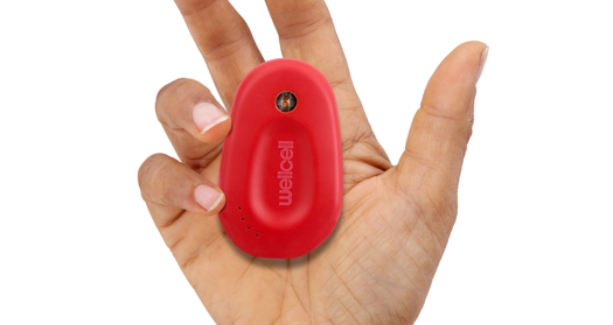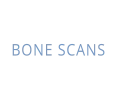

Robyn
Robyn has been using her Wellcell now for over 3 years and her bone scan results are very impressive. In her first year her bone mass improved by 15% and her second year by 12%. She has improved her bone mass by 30% over the first 3 years
Barbara
Barbara has built her bone mass by 28% in 8 years,which is quite remarkable. Her latest 2018 scan has shown a further 5% improvement. Barbara is now in her 70’s and to still improve bone mass which is against the ageing process makes this result very special.TO CONTACT US CALL OR EMAIL:
Tel: +61450515241 Email: ron@wellcell.com Web: www.wellcell.com Address: 20311/61 St Ledger Way, Ascot, Queensland 4007, AustraliaPlease speak with your doctor before purchasing any Wellcell products. The content on this site is not
intended to substitute for the advice of a qualified physician, pharmacist, or other licensed health-care
professional. The products may have additional information and instructions on or inside the packaging that
you should carefully read and follow. Contact your health-care provider immediately if you suspect that you
have a medical problem. This product may not have been evaluated by the Food and Drug Administration
and is not intended to diagnose, treat, cure, or prevent any disease or health condition. For any concerns or
questions, please contact your GP.

OUR SOLUTION
We have sequenced over 350 million light frequencies that target and energise cells of people & animals. We are all depriving our cells of valuable light while we are living indoors. By surrounding ourselves with our light will prevent the effects of harmful 5G radiationLight Is Life
The cells in our body rely on light to function optimally. Through a process known as biophoton emission, our cells emit ultra-weak photonic emissions in the visible and ultraviolet light spectrum that are essential for cell-to-cell communication and help regulate biological processes. Studies show that exposure to natural and artificial light sources can influence biophoton emissions and cellular health.
Guy in Dubai
You won’t find a better bone density scan than this for a 40 year old anywhere in the world. Guy has been using his Wellcell now for over 20 years and you can clearly see how good his bone density is. Guy uses his Wellcell purely for a healthy energised life style. With bone density like that he should live a long and healthy life.

Sue & Ron
Sues progress
Sue was still in a Electric wheelchair at the age of 68 but her Bones were still improving bone mass. Sues bones have improved without any drugs or supplements thanks to Wellcell light frequencies.
Sues 70th birthday
Now in a manual wheelchair
Sues bones have improved so much that hes latest bone density scan results put her bones better than age related.


Healthy Bones = Healthy Body
You only have to look at these bone scan results below to understand how powerful Wellcell therapy is with over 350 million individual light frequencies that have been formulated over the last 25 years.
WHATS THE CONNECTION?
Breaking old rules, raising new hope
Seven continual years spent in this bed
1st time outside after 7 years
The Wellcell has reversed her aging

Sue & Ron
San Francisco
Sue was so well that we travelled to Boston to meet the world renowned professor Michael Holick for his work with Osteoporosis. The visit was to show him Sues result with Wellcell and hopefully he would do a trial for us. Unfortunately, he agreed to do one on 20 patients at a cost of US$156,000 which the cost was out of reach for us.
Sues bone density graph
Sues bone density graph from 2011-2016. These results are a miracle considering that the medical fraternity say that you can’t build bone mass after 60 years old. Does this mean Wellcell is reversing aging as we know it.

High performance athletic racehorses using Wellcell improve their well-being which in turn improves their racing statistics
dramatically. So don’t you think if we can get these statistical results with these supreme athletes, that we can achieve well-
being on you.
WELLCELL
Wellcell improved the winning strike rate of racehorses by over 20%. Given that racehorses are elite athletes subjected to intense physical demands and stress, the positive outcomes of our therapy exemplify its efficacy in promoting health and well-being. The Wellcell device offers a non-invasive, drug-free alternative therapy. It eliminates the need for needles, surgical procedures, or any pharmaceutical interventions. The treatment involves exposing your body to specific light wavelengths that can be conveniently selected each month via Wellcell. This gentle therapy serves as a complement to traditional care. Our ultimate vision is for Wellcell to become an indispensable component of integrative medicine.

How Does Work

Cost
$999
Includes 12
months
subscription.
The Wellcell needs to
be re calibrated each
month with new light
frequencies.
Light: Essential for Well-being
One of the key components that we all need for our well-being and to perform at our best is light. Light plays a crucial role in our overall functioning and performance and controlling pain relief. Light is essential for us for a variety of reasons. Firstly, exposure to natural light helps regulate our internal body clock, known as the circadian rhythm. This rhythm influences our sleep patterns, hormone production, and overall physiological processes. By maintaining a consistent exposure to light, we can establish a healthy and reliable sleep-wake cycle, which is fundamental to our overall well-being. In addition, light also has a significant impact on the mental and emotional state of us. Natural light helps to stimulate the production of serotonin, a neurotransmitter that is associated with feelings of well-being and happiness. This can have a positive effect on our mood, behavior, and overall performance. On the other hand, inadequate exposure to light can lead to issues such as depression, anxiety, and decreased motivation. Besides the psychological aspect, light also plays a critical role in the physical development of us. Exposure to natural light is necessary for the synthesis of vitamin D, which is essential for proper bone growth and development. Strong and healthy bones are crucial for us, as they need to store our vital minerals and produce healthy blood cells.WHO WE ARE
Ron and Sue Hedgman, the owners of Wellcell Pty Ltd, have extensive experience in the fast-paced world of product development and customer wellness within the expansive health industry. However, Sue's health took a severe toll due to the high doses of steroids she was prescribed in the 1970s to treat her asthma. This led to the development of severe osteoporosis, rendering her bedridden for a staggering seven years. She was even incapable of turning over without assistance due to frequent bone fractures. Conventional medicine failed to provide any solutions, leaving her with a diminished quality of life and a bleak prognosis. It was during this challenging time that Ron stumbled upon a color therapist. Initially skeptical, given his engineering background, he had nothing to lose by exploring this alternative approach. Furthermore, he knew that doctors successfully used blue light to treat jaundiced babies. Ron delved into extensive research and investigation on the healing power of frequencies, setting out to bring this ancient wisdom into the modern world through the development of electronically-generated frequencies. The transformative impact of Wellcell's treatment on Sue's health cannot be overstated. In fact, it can only be described as miraculous. Thanks to the Wellcell treatment, her bone mass has improved by an extraordinary 72%, effectively curing her osteoporosis. She can now navigate her surroundings with the assistance of a wheelchair and a walking frame. This progress has enabled Sue to eagerly anticipate sharing her inspiring journey at seminars, something that once seemed an unrealistic and unattainable dream when conventional medicine had given up on her.

Robyn
Robyn has been using her Wellcell now for over 3 years and her bone scan results are very impressive. In her first year her bone mass improved by 15% and her second year by 12%. She has improved her bone mass by 30% over the first 3 years
Barbara
Barbara has built her bone mass by 28% in 8 years,which is quite remarkable. Her latest 2018 scan has shown a further 5% improvement. Barbara is now in her 70’s and to still improve bone mass which is against the ageing process makes this result very special.TO CONTACT US CALL OR EMAIL:
Tel: +61450515241 Email: ron@wellcell.com Web: www.wellcell.com Address: 20311/61 St Ledger Way, Ascot, Queensland 4007, AustraliaPlease speak with your doctor before purchasing any Wellcell products. The
content on this site is not intended to substitute for the advice of a qualified
physician, pharmacist, or other licensed health-care professional. The products
may have additional information and instructions on or inside the packaging
that you should carefully read and follow. Contact your health-care provider
immediately if you suspect that you have a medical problem. This product may
not have been evaluated by the Food and Drug Administration and is not
intended to diagnose, treat, cure, or prevent any disease or health condition.
For any concerns or questions, please contact your GP.

OUR SOLUTION
We have sequenced over 350 million light frequencies that target and energise cells of people & animals. We are all depriving our cells of valuable light while we are living indoors. By surrounding ourselves with our light will prevent the effects of harmful 5G radiationLight Is Life
The cells in our body rely on light to function optimally. Through a process known as biophoton emission, our cells emit ultra-weak photonic emissions in the visible and ultraviolet light spectrum that are essential for cell-to-cell communication and help regulate biological processes. Studies show that exposure to natural and artificial light sources can influence biophoton emissions and cellular health.
Guy in Dubai
You won’t find a better bone density scan than this for a 40 year old anywhere in the world. Guy has been using his Wellcell now for over 20 years and you can clearly see how good his bone density is. Guy uses his Wellcell purely for a healthy energised life style. With bone density like that he should live a long and healthy life.

Sue & Ron
Sues progress
Sue was still in a Electric wheelchair at the age of 68 but her Bones were still improving bone mass. Sues bones have improved without any drugs or supplements thanks to Wellcell light frequencies.
Sues 70th birthday
Now in a manual
wheelchair
Sues bones have improved so much that hes latest bone density scan results put her bones better than age related.


Healthy Bones = Healthy
Body
You only have to look at these bone scan results below to understand how powerful Wellcell therapy is with over 350 million individual light frequencies that have been formulated over the last 25 years.
Sue & Ron
San Francisco
Sue was so well that we travelled to Boston to meet the world renowned professor Michael Holick for his work with Osteoporosis. The visit was to show him Sues result with Wellcell and hopefully he would do a trial for us. Unfortunately, he agreed to do one on 20 patients at a cost of US$156,000 which the cost was out of reach for us.
Sues bone density graph
Sues bone density graph from 2011-2016. These results are a miracle considering that the medical fraternity say that you can’t build bone mass after 60 years old. Does this mean Wellcell is reversing aging as we know it.

WELLCELL
Wellcell improved the winning strike rate of racehorses by over 20%. Given that racehorses are elite athletes subjected to intense physical demands and stress, the positive outcomes of our therapy exemplify its efficacy in promoting health and well-being. The Wellcell device offers a non-invasive, drug-free alternative therapy. It eliminates the need for needles, surgical procedures, or any pharmaceutical interventions. The treatment involves exposing your body to specific light wavelengths that can be conveniently selected each month via Wellcell. This gentle therapy serves as a complement to traditional care. Our ultimate vision is for Wellcell to become an indispensable component of integrative medicine.

How Does Work

WHATS THE CONNECTION
Breaking old rules, raising new hope
























